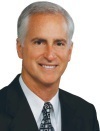RSNA 2012 president: For radiology to thrive, it has to put patients first
by
Brendon Nafziger, DOTmed News Associate Editor | November 25, 2012

Dr. George S. Bisset III
Dr. Karen E. Arscott said over the course of treatment for her lung cancer she received some 30-odd PET/CT scans but never once spoke with a radiologist.
"Not once," said Arscott, who's one of the founders of the Lung Cancer Alliance, a patient advocacy group.
And according to the current president of the Radiological Society of North America, experiences like Anscott's will have to become less common if radiology is to avoid commoditization and thrive in the era of health reform, where payers and policy-makers will push for so-called value-based payment models, with better outcomes at a lower cost.
"Our future depends on our capacity to develop a new kind of shared ownership of our patients' needs and expectations," RSNA 2012 president Dr. George S. Bisset III urged his colleagues Sunday morning during the opening speech of the society's 98th annual meeting in Chicago.
Bisset, the first pediatric radiologist to hold the RSNA presidency, said research suggests 80 to 90 percent of radiologists never meet with their patients. This is troublesome, he argued, if they want to avoid what's happening to their colleagues in pathology, another technology-dependent, largely hospital-based field that's now struggling against the impression that it's merely a "commoditized testing service."
"The question is, will we suffer the same fate?" Bisset asked.
The talk comes the same day as the radiological society launches a new campaign, RSNA Cares: the art of the patient-centered practice campaign, which calls for imaging doctors to take a pledge to become more active in patient care. Sixty-two people have taken the pledge at the time this article went to press.
Four key principles
Bisset said radiologists should try to achieve the four key principles of patient-centered care, as outlined by former Centers for Medicare and Medicaid Services administrator Donald Berwick: treat patients with dignity and respect, share accurate, timely and complete information, encourage patients to be involved in their own health care decision-making, and collaborate with patients across the whole institution.
Dr. Gary Glazer, the late chair of Stanford University's radiology department, who died last year and in whose honor RSNA 2012 is dedicated, warned in an article cited by Bisset that hospitals were reluctant to devote resources to radiologists that promote interaction, such as consulting offices. But Bisset said imaging doctors have to work to interact with, and understand, their patients, even doing something as simple as chatting with patients in their waiting room to see how to make a potentially anxious or boring wait better.
He also recommended a linguistic correction, calling patients "our patients, not patients or the patients, as radiologists often say," he said.
Sheila Ross, a former congressional staffer who helped found the Lung Cancer Alliance with Arscott after her own cancer diagnosis, said she also never spoke with a radiologist during her treatment, and only got to know them afterward during her advocacy work.
"You're very, very nice people," she said. "We should meet more of you."
|
|
|
You Must Be Logged In To Post A Comment
|
